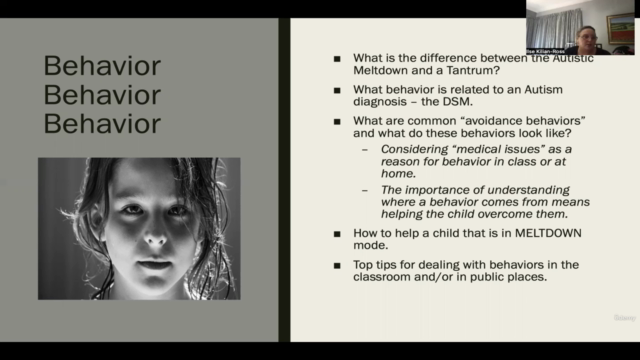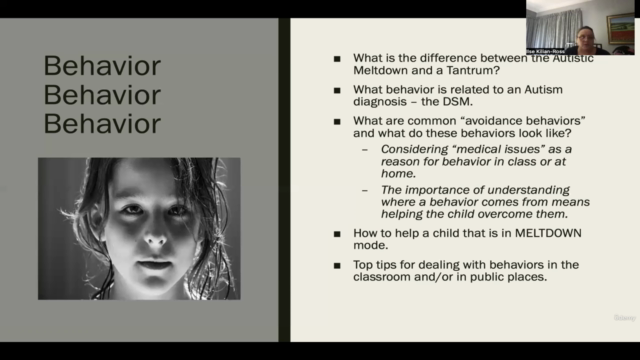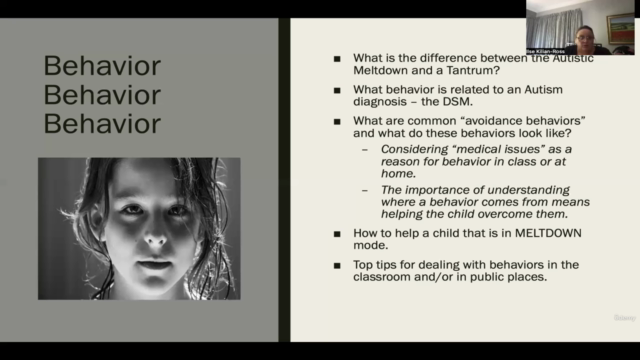Autism: All you need to know about autism
Autism diganosis, Autism & Emotion, Autism & Communication, Autism Treatment
4.35 (40 reviews)

200
students
5.5 hours
content
Jun 2025
last update
$19.99
regular price
Why take this course?
It seems you've provided a comprehensive list of topics related to supporting children with autism across various aspects of their development and daily life. Here are some additional insights and considerations for each of the areas you've mentioned:
Alternative Communication (AC)
- Introducing AAC should complement, not replace, existing communication abilities.
- It's a tool to support expression across all levels of speech and language ability.
Picture Exchange Communication System (PECS)
- PECS is a step-by-step system that teaches individuals to communicate using pictures.
- It can be an effective method for non-verbal or pre-verbal children to initiate communication with others.
Dyspraxia and Apraxia
- These are distinct conditions, but they both affect a child's motor skills and ability to plan movements required for speech.
- Interventions often focus on sensory integration therapy, occupational therapy, or speech therapy.
Eye Contact
- Eye contact can be challenging for some children with autism due to sensory processing issues or social challenges.
- Gradual exposure and positive reinforcement can help improve the comfort level with eye contact.
Music & Singing
- Many children with autism respond positively to music, which can be used therapeutically.
- Songs with predictable patterns can aid in learning and memory retention.
Effectiveness of Speech Therapy for ASD
- Speech therapy is often a key component of treatment for children with autism spectrum disorder (ASD).
- It targets both speech/language abilities as well as social communication skills.
Visual Schedules & Social Stories
- Visual schedules provide structure and predictability, which can be very calming and helpful for children with autism.
- Social stories are short descriptions of a particularly difficult social situation, which enable the individual to anticipate what is expected in that setting.
Social Skills
- Teaching social skills involves modeling, role-playing, and plenty of practice in various settings.
- It's important to be patient and to provide consistent, clear, and positive reinforcement.
Behaviour
- Understanding the function of a behaviour (what it communicates) is key to addressing it effectively.
- Positive behavior support plans focus on teaching appropriate alternatives and reinforcing those behaviors.
Fine Motor Development
- Activities that involve manipulating small objects can help improve fine motor skills.
- Occupational therapy often includes activities like drawing, building with blocks, or crafting.
Gross Motor Development - Play & Exercise
- Gross motor skills are crucial for physical development and can impact academic performance and social interactions.
- Activities like sports, dance, or climbing frames can be beneficial.
Diet & Eating
- Nutritional deficiencies or sensory issues can affect a child's willingness to eat certain foods.
- A dietitian can help address nutritional concerns and create a meal plan tailored to the individual's needs.
Teaching Safety
- It's essential to teach children with autism about safety, especially in situations like water hazards or traffic.
- Visual aids, social stories, and consistent practice can be effective teaching tools.
Keeping Kids Busy at Home
- Activities should be tailored to the child's interests and abilities.
- Engaging in creative projects or educational activities can provide both entertainment and learning opportunities.
Travel with Kids on the Spectrum
- Planning and preparation are key when traveling with a child with autism to manage sensory overload and maintain routines.
Makaton
- Makaton is a multi-sensory communication method that uses symbols, signs, and speech to aid those who find it difficult to communicate effectively in words.
- It can be particularly useful for non-verbal individuals or those who are learning to speak.
It's important to remember that each child with autism is unique, and what works for one may not work for another. A personalized approach, with the involvement of professionals such as speech therapists, occupational therapists, behavioral specialists, and dietitians, is often most effective. Additionally, involving the family and creating a supportive, understanding environment at home can greatly contribute to the child's progress and well-being.
Course Gallery




Loading charts...
Related Topics
4266016
udemy ID
27/08/2021
course created date
20/12/2022
course indexed date
Bot
course submited by